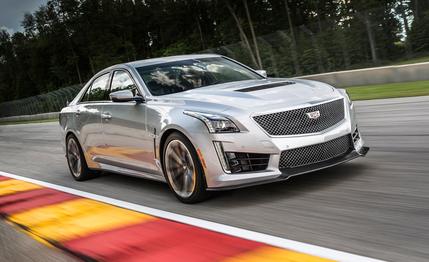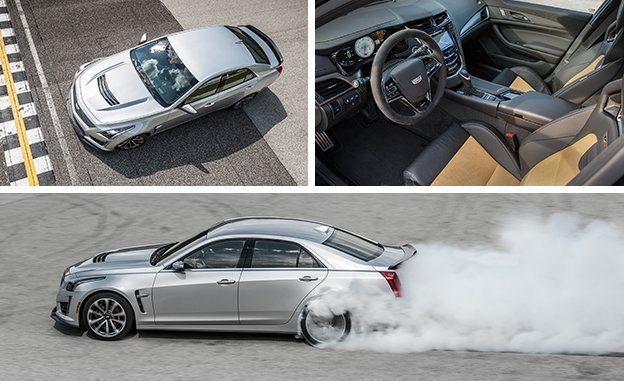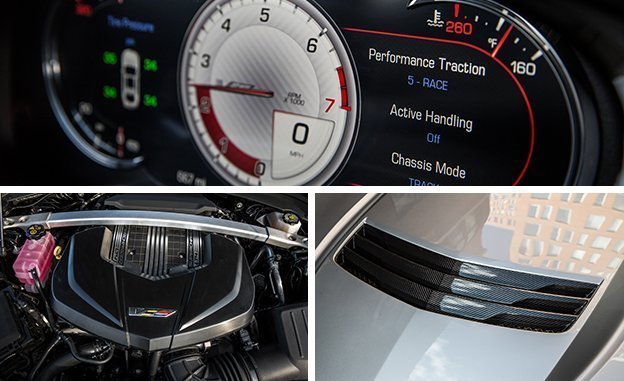
 Instrumented Test
Instrumented Test
Need we remind you these are seriously twisted times? Without prompt intervention, Bartholomew JoJo Simpson, that lovable fourth-grade cartoon cutup, will never see his 11th birthday. Homer is dumping Marge for a younger woman. Former down-home darling Miley Cyrus might be the instrument of some secret society. And in our own world, zero-emission vehicles are vying for garage space with modern muscle cars.
What we need to weather this maelstrom is a car we can trust. Something fast and fun, an automobile suitable for commuting that will broom cerebral cobwebs with every brush of the right pedal. An American Pharoah, if you will.
Cadillac has raised both hands to answer this call. With a decade of V models under its belt, a division boss who understands the fast-four-door gambit (after having helped Audi master it), and the General’s steadfast backing, the redesigned and newly wreathless crest is ready to play supersedan hardball courtesy of its third-generation CTS-V.
This segment could use a spritz of vitality. Jaguar has sold its meager allotment of XFR-Ss. Lexus’s new GS F lacks sufficient firepower. A Porsche Panamera with competitive gusto costs $142,295. That leaves only the Audi RS7, BMW M5, and Mercedes-AMG E63 S on Cadillac’s dartboard.


Caddy’s dart is built on an efficient Alpha platform evolved from the ATS. A supercharged and intercooled 6.2-liter LT4 V-8 borrowed from the Chevy Corvette Z06 provides a healthy 640 horsepower at 6400 rpm and 630 pound-feet of torque at 3600 rpm. Smart electronic controls regulate the eight-speed automatic transmission, electrically assisted power steering, magnetorheological dampers, and limited-slip differential. There’s enough Brembo braking capacity here to slow a locomotive. Recaro sport seats and Michelin Pilot Super Sport tires on forged aluminum wheels enhance traction inside and underneath. A smattering of carbon-fiber components, including the hood, help the CTS-V beat the curb weights of its enemies by 100 to 600 pounds. This is pharmaceutical-grade stuff.
To prove that its track-day stamina isn’t hollow braggadocio, Cadillac turned us loose on Road America’s four-mile circuit where we topped 140 mph three times per lap. This was the ideal venue to learn the CTS-V’s finer points. First lesson: Don’t try to outsmart the gearbox by clicking the paddle shifters. Simply leaving the console shifter in D in any driving mode above Tour runs the engine to within 200 rpm of the 6500-rpm redline before upshifts, while also providing the right gear for hustling out of bends. We observed the CTS-V’s astute Performance Traction Management system adjusting power and differential lock-up to modulate understeer during turn-in and oversteer when exiting turns. Our third discovery is that the real fun comes in PTM’s Race mode when all the well-intentioned assist systems are mostly dormant. The trick is to trail the brakes entering a corner so the front tires don’t wash out; then you carefully add throttle in the middle of the turn to avoid wagging the tail. One of the CTS-V’s most endearing traits is the reserve built into the last 10 percent of accelerator-pedal travel. Saving that booster rocket for the corner exit rewards you with big speed at the end of the straight.


Working the quick, hefty steering is the best isometric exercise you can enjoy sitting down, though you must concentrate to sense the faint feedback from the front tires. In the interest of maximizing hand-to-wheel and butt-to-bucket grip, don’t skip the $300 faux-suede steering wheel and shifter covers or the $2300 Recaro front seats. Note to Cadillac: A more congenial surface for bracing a left knee against the door panel would be welcome.
Given the CTS-V’s two-ton-plus heft, you’d think that carbon-ceramic brakes would be handy for track-day expeditions. Chief engineer Tony Roma and Brembo engineer Benjamin Pohl acknowledge that such an option was considered but rejected on cost grounds and the desire to configure the base car in track-ready form. Instead of complicating the CTS-V with two brake packages, Cadillac set a goal of providing enough thermal capacity to support two fuel tanks’ worth of uninterrupted track lapping without overheating the brakes. To achieve that objective, the six-piston front and four-piston rear calipers grab four of the largest vented-iron rotors in captivity. The fronts are 15.4 inches in diameter, the rears 14.4. The pedal feels happy in its work, with deceleration directly proportional to the applied pressure and minimal droop during hot lapping. Bolted-in aluminum centers save weight, and a patented ferritic nitro-carburizing process (heat treating in a nitrogen-rich atmosphere) improves durability while discouraging corrosion.